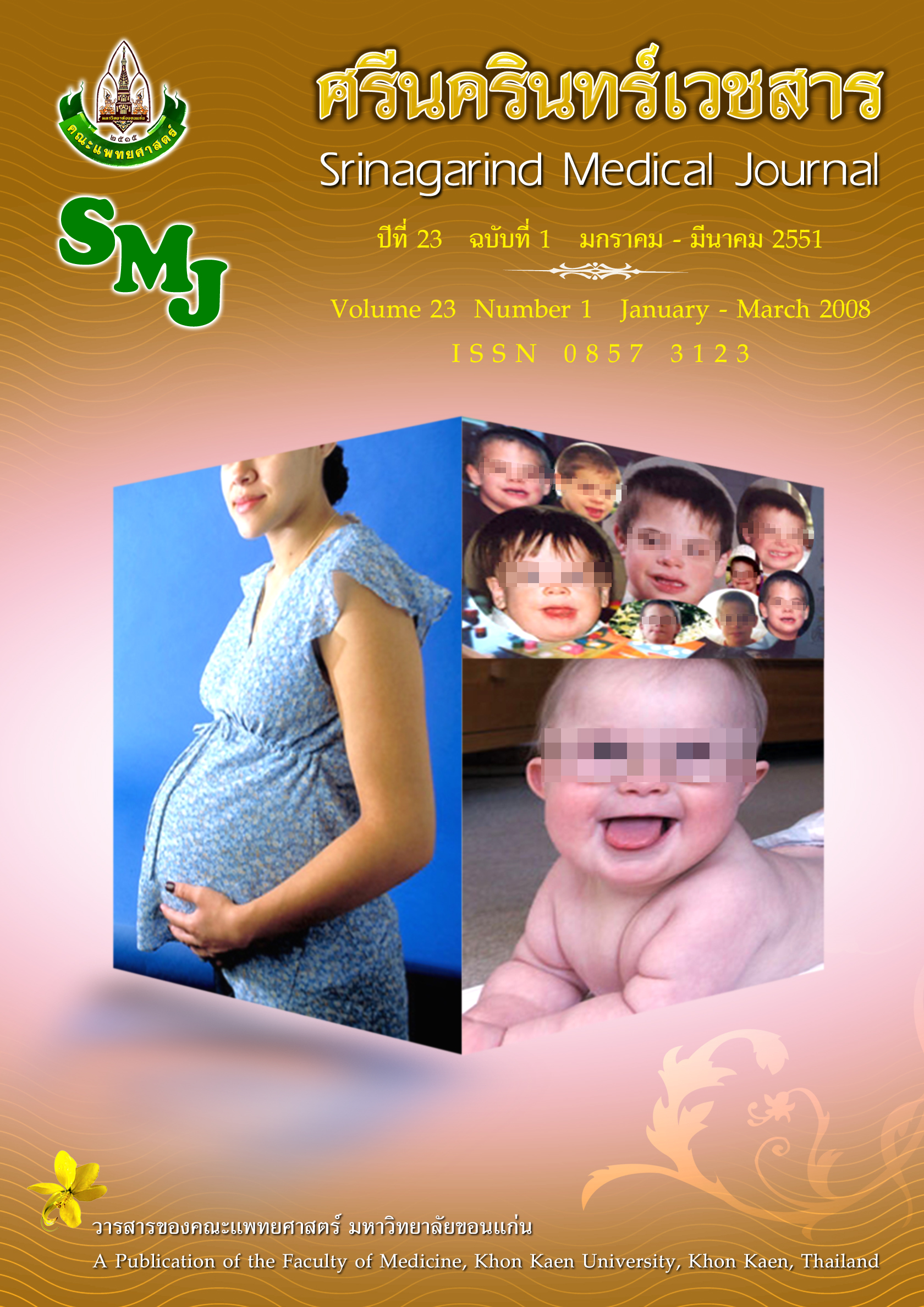Mammographic Technique from Mammography
Abstract
Background: Mammography is the most effective method to screen asymptomatic women and detect early stage of breast cancer. Effectiveness of technical parameters are important for image quality such as the tube potential(kV), the tube current and time (mAs), compressed breast thickness, breast compression force, breast density categories and breast dose.
Objective: To study mammographic technique from mammography.
Design: Retrospective descriptive study
Setting: Department of Radiology in Srinagarind Hospital Khon Kaen University.
Population and Samples: One thousand and six hundred mammographic films of screening breast, who are 40 years old or older were selected.
Statistical analysis: Pearson’s Correlation and percentage
Results: Heterogenously dense tissue was the most common tissue type, seen on age 41-50 years. The second most common type was scattered fibroglandular densities. Extremely dense tissue was not found on age more than 60 years old. The maximum force was 45 lb on MLO view, mAs and thickness were 199 mAs and 8.2 cm on CC view respectively. High significant correlation between mAs and thickness (r=0.8078,p<0.05) and no correlation significant between kV and thickness, mAs and force.
Discussion: The breast density change corresponding to age2,12. The compression force as standard force recommended by ACR and AAPM should not exceed 45 lb. The mAs has to be increased with increased breast thickness. This result is increased radiation dose, which can be reduced by increased tube potential (kV) or select Rhodium(Rh) filter or select Fix kV system (up kV from 27 to 30 kV) for large breast and breast thickness more than 6 cm6-9 .
Conclusions: In case of large breast with compressed breast thickness more than 6 centimeter can reduced breast dose by increase kV from 27 to 30 kV or change filter from molybdenum to rhodium in Auto kV system.




